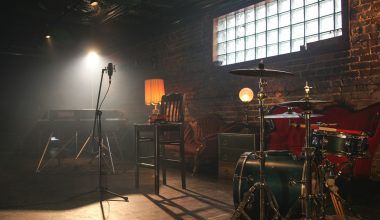If you’re an aspiring musician or producer, you’ve probably come across the term “music sampling.” Sampling is an art in itself, letting you use bits and pieces of existing songs to create something entirely fresh. But while sampling can elevate your track, it also comes with legal responsibilities. This blog will guide you step-by-step on how to clear music samples and make your work legally sound.
Why Clearing Music Samples Matters
Imagine creating a track that’s gaining momentum—it’s trending on social media and radio stations. Then, you receive a legal notice from the original artist’s record label. This situation can quickly turn your success story into a legal nightmare. Clearing music samples is essential because:
- It ensures you’re respecting intellectual property rights.
- It avoids costly lawsuits and damages.
- allows your track to be distributed on mainstream platforms like Spotify, YouTube, and Apple Music without restrictions.
By clearing your samples, you’re showing respect for the original artist’s work and protecting your own creativity.
Understand the Basics of Music Sampling
Before diving into how to clear music samples, it’s essential to understand what sampling entails. Sampling is when you take a portion—whether it’s a melody, a beat, or even a vocal line—from an existing track and incorporate it into your music. Sounds simple, right? However, each sample you use is someone’s intellectual property, meaning they own the rights to it.
The Two Types of Rights Involved
When you sample a song, you’re dealing with two distinct copyrights:
- Master Recording Rights: These belong to whoever owns the recording—usually a record label.
- Composition Rights: These belong to the songwriter or composer.
To use a sample legally, you must clear both rights.
Step-by-Step Guide to Clearing Music Samples
1. Identify the Sample
First, pinpoint exactly what you’ve sampled. This might seem obvious, but it’s crucial to know:
- The original track’s title.
- The artist or band who performed it.
- The album it’s from (if applicable).
- The duration and specific portion of the track you’ve used.
Being precise helps streamline the clearance process and avoids unnecessary confusion.
2. Research Ownership Details
Once you know the sample’s origin, the next step is to find out who owns the rights. Here’s how you can do this:
- For Master Rights: Contact the record label listed on the original track.
- For Composition Rights: Look up the songwriters and publishers. You can use databases like ASCAP, BMI, or PRS to find this information.
If the ownership details are split among multiple parties, you’ll need clearance from all of them.
3. Reach Out for Permission
Now comes the part where you contact the rights holders. Craft a professional and respectful email or letter explaining:
- Who you are.
- The specific sample you want to use.
- How you plan to use it in your work.
- Where the track will be distributed (streaming platforms, radio, live performances).
Be honest and clear. Rights holders appreciate transparency.
4. Negotiate Terms and Fees
Once you’ve made contact, the rights holders will usually outline their terms. These might include:
- A one-time licensing fee.
- A percentage of royalties from your track.
- A credit requirement in your song’s metadata or liner notes.
Negotiation is common, so be prepared to discuss what works for both parties.
5. Sign a Licensing Agreement
After agreeing on terms, the rights holders will draft a licensing agreement. Review it carefully, and if possible, consult a music lawyer to ensure everything is in order. Once signed, you’re good to go!
Alternatives to Traditional Sampling
Clearing music samples can be time-consuming and expensive. Here are some alternatives:
- Use Royalty-Free Samples: Platforms like Splice and Loopmasters offer pre-cleared samples you can use without legal hassles.
- Create Original Content: Work with session musicians or producers to recreate the vibe you’re after.
- Explore Public Domain Music: Tracks in the public domain are free to use, but ensure the version you’re sampling isn’t copyrighted.
Common Misconceptions About Sampling
Let’s address a few myths that often confuse new artists:
- Myth 1: “If I only use a few seconds, I don’t need to clear it.” – False. Even a tiny snippet requires clearance.
- Myth 2: “Changing the pitch or tempo makes it legal.” – Nope. Altering a sample doesn’t bypass copyright laws.
- Myth 3: “I can clear it after releasing the song.” – This can lead to legal troubles. Always clear samples beforehand.
The Consequences of Not Clearing Samples
Skipping the clearance process might save time, but it’s a risky move. Here’s what could happen:
- Legal Action: You could face lawsuits from rights holders.
- Revenue Loss: Platforms may pull your track, cutting off income streams.
- Reputational Damage: Being known for copyright infringement can hurt your career.
Tools and Resources to Simplify the Process
Thankfully, technology can make clearing samples easier. Consider these tools:
- Tracklib: A service specifically designed for sample clearance.
- SoundExchange: Helps with licensing and royalty distribution.
- Music Rights Organizations: Databases like ASCAP and BMI simplify finding rights holders.
Final Thoughts
how to clear music samples may seem daunting, but it’s a necessary step in building a sustainable music career. By respecting intellectual property rights, you’re not only protecting yourself but also contributing to a culture of creativity and fairness in the music industry. Follow these steps, stay organized, and never hesitate to seek professional advice when needed. Your future self—and your audience—will thank you.
For further reading, explore these related articles:
- The Incredible Story of Busta Rhymes: A Rap Icon
- The Best Queen Songs: Discover Why They Are Loved by Millions
For additional resources on music marketing and distribution, visit Deliver My Tune.






